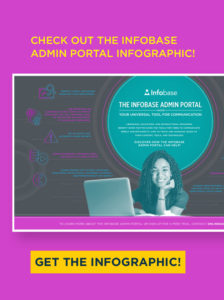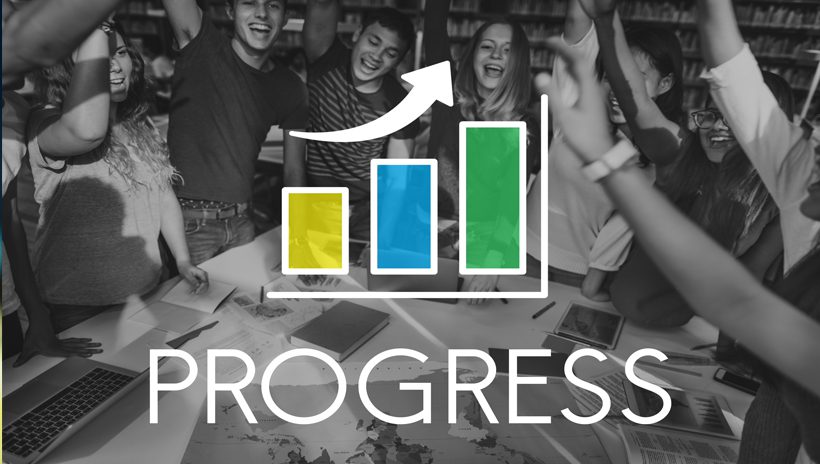As this very unique school year came to an end, I almost decided to skip writing an annual report. After all, was this pandemic year a year that we’d want to remember? Would the report be nothing but, “We couldn’t do xyz because of COVID?” But I began the process anyway and, through it, rediscovered that there was so much to celebrate, even in this challenging year.
My first library mentor always stressed the importance of reporting to the school administration at the end of the year. Her reports were all about accountability and numbers: how the budget was spent, how many hits each database got, how many classes were scheduled in the library. We took a long time to format the tables and charts on paper and to proofread to get everything just right. I’m not sure anyone ever read those reports, but we knew it was important documentation of our year and justification for our program, and a copy always went into our filing cabinet.
It was Dr. Ross Todd of Rutgers University who led me to take my reporting further. I attended a workshop he presented on documenting your library’s program, and came away understanding that reporting numbers isn’t enough; I need to tell my library’s story. Storytelling can incorporate those same statistics but also needs to include the voices of my patrons, images of library programs, and reflection on the library’s impact on learning.
Aligning Annual Reporting to School Goals
 At a conference of the International Association of School Librarianship in 2001, Todd said:
At a conference of the International Association of School Librarianship in 2001, Todd said:
“Information is the heartbeat of meaningful learning in schools. The hallmark of a school library in the 21st century is not its collections, its systems, its technology, its staffing, its buildings, BUT its actions and evidences that show that it makes a real difference to student learning, that it contributes in tangible and significant ways to the development of human understanding, meaning making and constructing knowledge. The school library is about empowerment, connectivity, engagement, interactivity, and its outcome is knowledge construction.” (Todd as quoted in Gordon.)
Inspired by Todd’s work, my colleagues and I at the American School of Doha decided to use our library’s LibGuides website to write an annual report that was organized by the school’s strategic goals. I took that idea with me to the American Embassy School of Delhi, where our annual report is based on the school’s mission statement.
Ross encouraged me to get more information from our students and faculty. Each year I send out a variety of surveys at different times and to different audiences. The most in-depth survey was inspired by the Student Learning Through Ohio School Libraries study. All students are surveyed after they participate in author visits. A one-question exit survey is given when students complete 5th, 8th, and 12th grade: “Think about one time in your AES career when the school library really helped you. Write about the help that you got, and what you were able to do because of it.” The surveys are primarily intended to capture the impact of the library on learning.
The Benefits of Going Digital
Using our library’s digital platform to publish the report has many benefits. A digital report has a wider audience than it would if we printed a handful of copies and passed them out. (We can even track its reach by using the statistics feature on LibGuides.) We can gather evidence for the report throughout the year (my library team has a spreadsheet where we add stats each year) and photos and articles as they happen, and only publish it when we’re ready. Even after it’s published, we can continue to modify it as needed. And, a digital report is more vibrant than a printed report, including hyperlinks, slideshows, and videos.
If you’re considering upgrading your report, don’t worry about doing it all at once. Consider adding one or two new things this year, and maybe a couple more next year, and remember that you don’t have to report on the same things each time. Try to determine what kind of story you want to tell and what pieces of evidence will help illustrate that story. To do that, keep in mind the library’s mission and support of your school’s mission (or other guiding statements).
Reflection is an important part of any learning or research process. As librarians, we should model that and spend some time reflecting on the year. I’m glad I did, especially in this crazy year.
Here are some things you might include in a school library annual report (while supporting everything with photos, videos, links, and patron voices). It’s helpful to make connections to the library or school-wide mission/vision, guiding documents as a way to structure your report.
Celebrate your students:
- Top borrowers
- Your students’ favorite titles
- Book club activity
- Circulation stats by grade or class or month
- Student quotes and survey results
- Photos of students in the library
Celebrate teaching and learning:
- Library curriculum/standards
- Research or teaching units the library supported
- Student reflections on research
- Collection development specific to the school’s curriculum
- Summer reading program
- Digital citizenship lessons
- Class visit data
- Experts consulted to answer student questions
Celebrate your physical library:
- Physical updates—signage, organization, furniture
- Popular locations
- New books or books that support themes or topics important to your school
- A “day in the life” time lapse video
- Print circulation stats (including books, magazines, DVDs, or whatever you circulate)
- Makerspace usage data and photos
- Circulation stats by genre
- Collection age
- Books per student
- Average price per new book purchased
Celebrate your digital library:
- Links to databases and other digital platforms
- Usage stats: databases, eBooks, digital magazines, library website
- Top digital titles
Celebrate connections to your community, special events, and programs:
- Author visits
- Parent book clubs
- Reading programs (e.g., One Book One Community)
- Used book sales
- Book fairs
- Book launches
- PTA connections
- Battle of the Books
- Events hosted in the library (concerts, competitions, presentations)
Celebrate your library staff:
- Special projects, accomplishments, achievements
- Professional development or training
- Staff features and photos
- Research, articles, or news that impacted your work
Celebrate your community connections:
- Internship or volunteer programs
- Interactions with librarians from other schools
- Donations
- Connections with local libraries (public or university)
Celebrate your library program:
- Library budget breakdown by budget category
- Curbside checkout program
- Goals met
- Goals for the future
See also:
- Teaching Virtually as a School Media Specialist: Interview with Eboni Henry
- 6 Tips to Build and Manage a Digital School Library
- Becoming the K–12 Embedded Librarian: Encouraging Librarians to Collaborate to Foster Relationships within Their Schools
- Webinar: Teaching Research Skills Remotely: Focus on MS/HS, Grades 7–12


